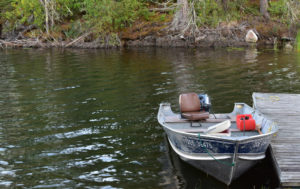Estate planning is a legal term which means a plan that a person has made, prior to death, which clearly and succinctly sets out how the person would like their assets distributed to their heirs and creditors upon their death. Estate planning usually comes in the form of a Will or a Trust. Speaking with an experienced retirement planning lawyer is a must.
Estate planning, on a basic level, means that a person has an attorney draft a Will and various Power of Attorney directives. However, having a Will does not necessarily avoid probate. In fact, if you only have a Will and not some form of additional Trust, your estate will need to be probated after death.
Many people feel that the term “probate” is a negative one. However, the probate process was created so that the Court in each state or county can effectively administer the deceased’s assets under the person’s Will. Having a Court watch over the process is also a way to ensure the personal representative is doing what is right under the law.
Probate Assets
A deceased person will have estate assets in many different forms. Some of these estate planning assets will be found to be “probate assets” and some of them will be considered “non-probate assets”.
Probate assets are typically those assets which are owned by the deceased person in their individual name only. This could be a bank account which the Court can transfer, under the Will, in the probate process. Another example of a probate asset is the deceased person’s home if it is title in his or her name only.
A non-probate asset is any asset held by the deceased person that can be transferred without going through the probate process. Non-probate assets can include: real estate held as a joint tenant with rights of survivorship, joint bank accounts, other joint accounts, pay-on-death (POD) accounts, a transfer-on-death (TOD) account, or other such joint account.
If a Will or Trust is created, the deceased person will have appointed either a personal representative to lawfully administer the deceased’s assets upon his or her death. Upon the person’s death, the initial duty of the personal representative is to figure out how to discover estate assets. Speaking with an attorney is the next step in properly collecting and distributing a deceased person’s estate assets.
As was discussed above, there are specific kind of assets which must be discovered and sorted by the personal representative and the lawyer. The personal representative should give the attorney an idea of what assets the deceased person may have had at death. The attorney can then look at them and determine whether they are “probate” or “non-probate” assets. Additionally, the personal representative and the attorney need to know about the estate assets as the personal representative may be required to file a federal estate tax return and the tax return of the deceased’s particular state.
That is the initial process for discovering assets and how to work with an attorney to administer the deceased person’s estated. Again, hiring the right estate planning lawyer in Minnesota to properly administer the deceased person’s estate can be of the utmost importance and a life savor to the appointed personal representative or trustee. Getting informed on the estate planning process is another good way to help yourself understand this complicated field of law.




3 thoughts on “Estate Planning | Probate Assets”